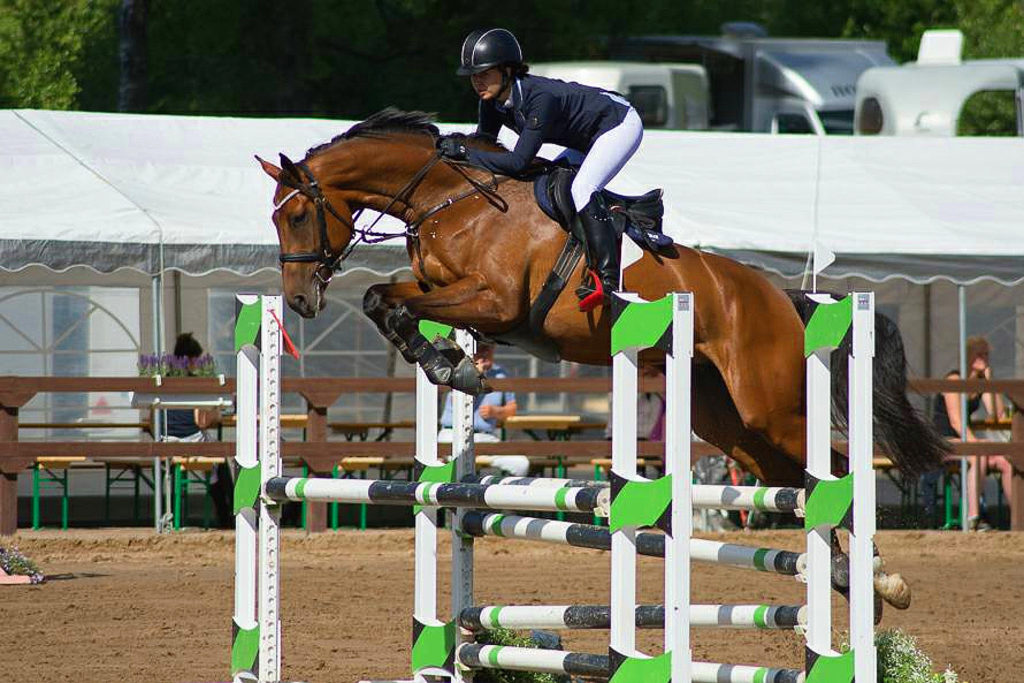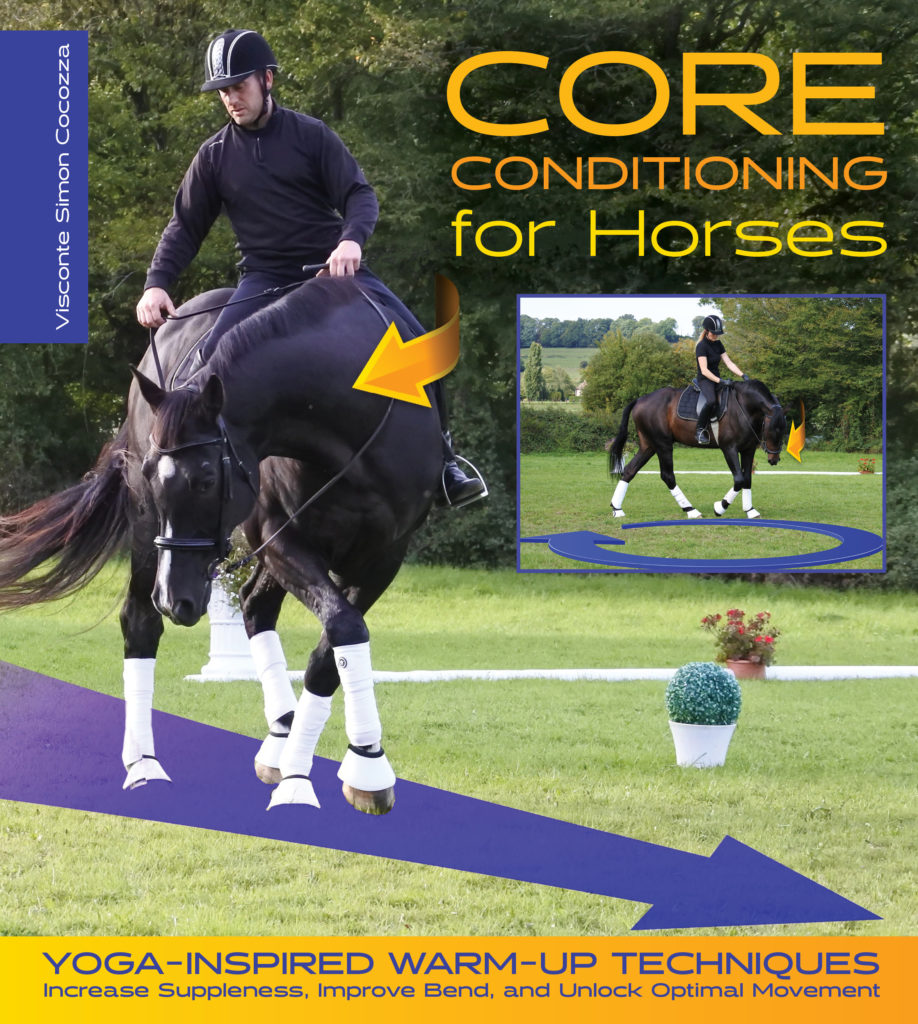This excerpt from “Core Conditioning for Horses” by Simon Cocozza is reprinted with permission of Trafalgar Square Books.
In this excerpt from his book Core Conditioning for Horses, trainer and clinician Visconte Simon Cocozza explains the three main sections of the horse’s body controlled by the core.
The horse’s core is a masterpiece of concept and design. The big muscles on the outside of his body thrust the horse forward. The core muscles, on the other hand, play a lifting and carrying role, sending the body upward and maintaining posture from the inside. When working correctly, these two systems give the horse that wonderful feeling of “roundness” in the back that only comes when the whole body is moving correctly.
The horse’s core is a maze of muscles, bones, and “stringy stuff” arranged in a very, very clever way. So clever that this mechanism can launch a 1000-pound horse into the air from a standstill with no warning whatsoever. This is its party piece, after all, and shows how well the system works.
The horse’s core has many jobs:
- Controls posture.
- Creates suspension and elevation.
- Connects all the big body parts.
- Controls balance.
- Manages the center of gravity.
- Powers the “roundness” of the back.
- Dictates jump height and bascule.
- Creates the alignment needed for straightness.
“A strong core will improve your technique, strength, and stamina, and complement everything you do,” notes Susan Trainor, classical ballet dancer and choreographer.
 Photo by Tiia Tuulivaara.
Photo by Tiia Tuulivaara.
The horse’s body has three main sections that are controlled by the core:
- Section 1: THE FRONT END—the shoulders, chest, and neck.
- Section 2: THE MIDDLE—the back and belly.
- Section 3: THE REAR END—the “lower” back, hindquarters, and hind legs.
Each large section of the horse’s body contains its own special function that centers around its section of the spine. Each of these spinal sections moves differently, does a different job, and needs different conditioning sequences to bring full range of motion to the full length of the horse.
1 THE FRONT END is the neck, chest, and shoulders. It contains the cervical spinal vertebrae and the thoracic sling mechanism, which is made up of the muscles that attach the horse’s front legs to his body, and when contracted, raise the rib cage. This section primarily gives the horse suspension and steering.
The cervical vertebrae in the horse’s neck are very mobile and can move in all three directions: up and down (vertical); left and right (lateral); and twist (rotational), making this part of the horse super “bendy”!
2 THE MIDDLE is made up of the back and rib cage, which are attached to the thoracic spinal vertebrae. This section of the horse has the least movement in the spine, but it must perform the biggest job: It has to carry all the horse’s internal organs, as well as a saddle and a rider, so it has to be very strong to work well. The thoracic vertebrae can only bend laterally, and this vital “bendy bus” effect allows a horse with a good core to wrap himself around corners from his middle, giving him the ability to stay straight and in balance under all circumstances.
3 THE REAR END is the horse’s lower back, pelvis, and the huge muscles in the horse’s bum. Thrust and balance lie in this very powerful body section. When functioning as designed, the vertebrae in the lumbar section of the spine can both “round” vertically and “twist” rotationally. This gives the horse the ability to both lower and swing his rear end at the same time. This is also called the Pelvic Tilt, and it is one of the horse’s three Core Powers.
Nature gave the core some truly amazing skills. To be able to gallop off without lifting the head, to “sit down” and go without skidding, and to be able to jump in any direction—the horse has all the skills needed for evading the many predators he has faced over time. It is these Core Powers that give the horse his incredible agility, his prance…and also his ability to dance.
Pick up your copy of Core Conditioning for Horses by Simon Cocozza here.

